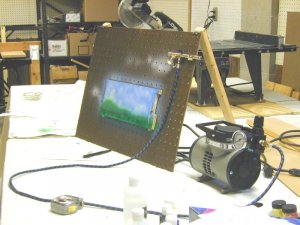I just read TomPM's excellent 'how to' post on airbrushing with craft paints and it sparked a question in my mind. I've searched this forum and read all I could find on airbrushing and one thing that struck me was the range of pressures people use. 22-43 PSI.
Why the differences?
Does it depend on the type of brush? ie: single/double action-internal/external mix.
Does it depend on the type of paint being used? lots of different kinds out there it seems
Does it depend on the affect sought after? ie: a light dusting for misting backgrounds or weathering stock vs. a complete covering for painting stock or structures
Or is it just personal preference?
I just got an airbrush and have played with it just a bit and would think that a higher PSI would cause more overspray thus maybe wasting paint.
Anyway..this neophyte is once again asking the sage experience represented on this forum to share thier opinions and expertise..
Thanks
Why the differences?
Does it depend on the type of brush? ie: single/double action-internal/external mix.
Does it depend on the type of paint being used? lots of different kinds out there it seems
Does it depend on the affect sought after? ie: a light dusting for misting backgrounds or weathering stock vs. a complete covering for painting stock or structures
Or is it just personal preference?
I just got an airbrush and have played with it just a bit and would think that a higher PSI would cause more overspray thus maybe wasting paint.
Anyway..this neophyte is once again asking the sage experience represented on this forum to share thier opinions and expertise..
Thanks


